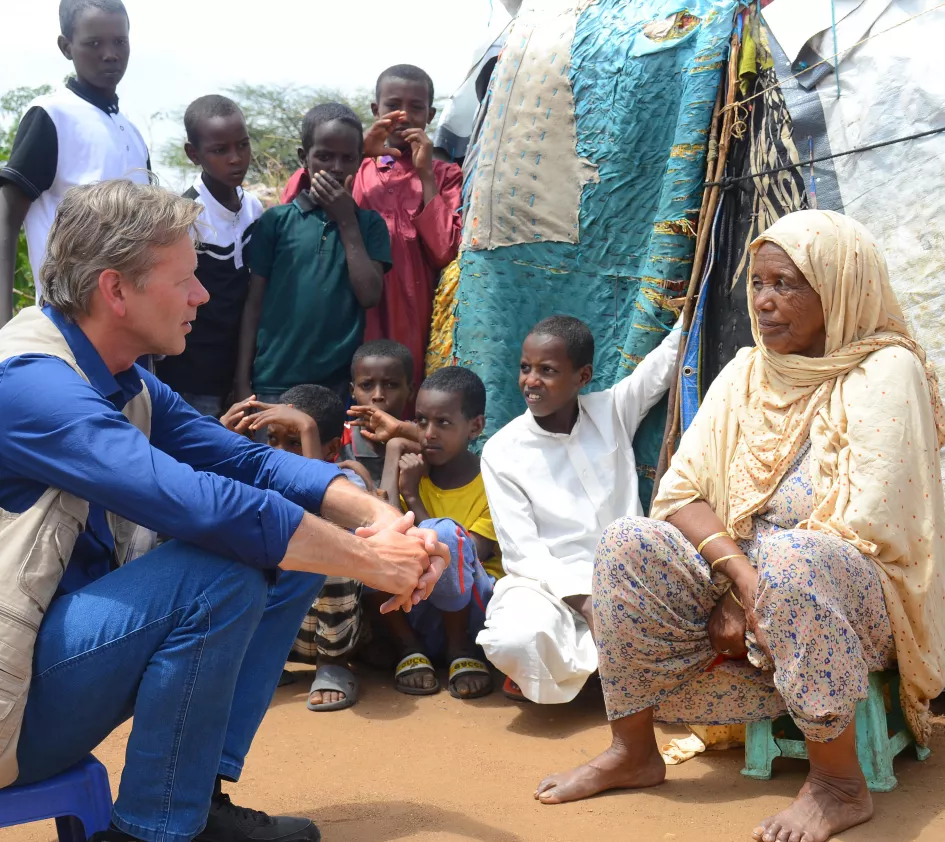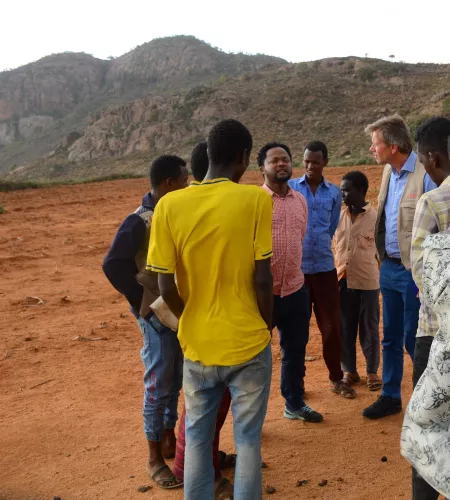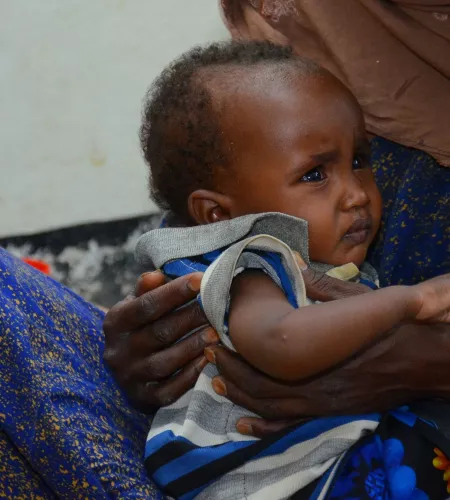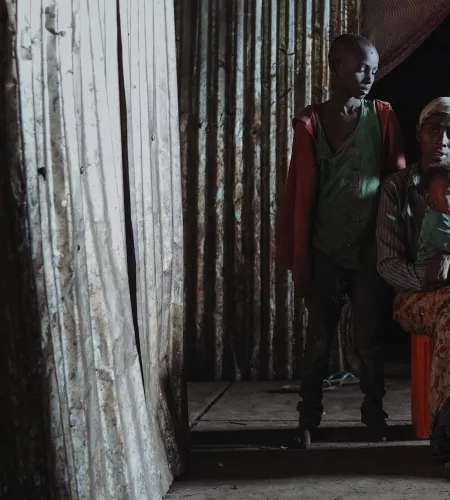'I am his mother now'
At a rural clinic that Joël visited, ten children were being treated for malnutrition. One of the ladies in the clinic looked too old to be the mother of one of the children. He informed about her situation: “I am the mother of this little boy now,” she replied. “My daughter died during childbirth six weeks ago due to malnutrition and exhaustion. Now I am responsible for my grandson.”
This child, who was born in a malnourished state, was lucky that his grandmother was able to walk fifteen kilometers to the clinic for food supplements, says Joël. “Most children die at home. Mothers cannot travel with a malnourished child if they have to take care of other children at home. Generally, the men are not around. They moved to the city to earn money because crops fail and livestock dies from the drought.”




